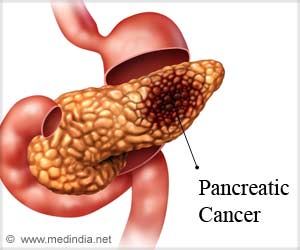Excessive daytime sleepiness and lack of enthusiasm could triple your risk of developing motoric cognitive risk syndrome (MCR), which may eventually lead to dementia.

Older people who feel sleepy during the day or show a lack of interest in activities due to sleep problems may be at a higher risk of developing a syndrome that can lead to dementia, according to a study.
The findings of the study are published in the online issue of Neurology®, the medical journal of the American Academy of Neurology (1✔ ✔Trusted Source
Association of Sleep Disturbances With Prevalent and Incident Motoric Cognitive Risk Syndrome in Community-Residing Older Adults
).
Advertisement
Motoric Cognitive Risk Syndrome (MCR): The Early Warning Signs Before Dementia
People with the syndrome have a slow walking speed and say they have some memory issues, although they do not have a mobility disability or dementia. Called motoric cognitive risk syndrome, the condition can occur before dementia develops.
Advertisement
Excessive Daytime Sleepiness and Lack of Interest: Early Signs of Dementia Risk in Seniors
The study found that people with excessive daytime sleepiness and a lack of enthusiasm to get things done were more likely to develop the syndrome than people without those sleep-related issues. The study does not prove that these sleep-related issues cause the syndrome, it only shows an association.
“Our findings emphasize the need for screening for sleep issues,” said study author Victoire Leroy, MD, Ph.D., of Albert Einstein College of Medicine in the Bronx, New York. “There’s potential that people could get help with their sleep issues and prevent cognitive decline later in life.”
Advertisement
Sleep Issues and Cognitive Decline: A Dangerous Link
The study involved 445 people with an average age of 76 who did not have dementia. Participants took questionnaires for sleep at the start of the study. They were asked about memory issues and their walking speed was tested on a treadmill at the start of the study and then once a year for an average of three years.
The sleep assessment asked questions such as how often people had trouble sleeping because they wake up in the middle of the night, cannot fall asleep within 30 minutes, or feel too hot or cold and whether they take medicine to help them sleep. The question to assess excessive daytime sleepiness asks how often people have had trouble staying awake while driving, eating meals or engaging in social activity. The question on enthusiasm asks how much of a problem people have had keeping up enough enthusiasm to get things done.
A total of 177 people met the definition for poor sleepers and 268 met the definition for good sleepers.
At the start of the study, 42 people had motoric cognitive risk syndrome. Another 36 people developed the syndrome during the study.
Of those with excessive daytime sleepiness and lack of enthusiasm, 35.5% developed the syndrome, compared to 6.7% of the people without those problems. Once researchers adjusted for other factors that could affect the risk of the syndrome, such as age, depression and other health conditions, they found that people with excessive daytime sleepiness and lack of enthusiasm were more than three times more likely to develop the syndrome than those who did not have those sleep-related problems.
“More research needs to be done to look at the relationship between sleep issues and cognitive decline and the role played by motoric cognitive risk syndrome,” Leroy said. “We also need studies to explain the mechanisms that link these sleep disturbances to motoric cognitive risk syndrome and cognitive decline.”
A limitation of the study is that participants reported their own sleep information, so they may not have remembered everything accurately.
References:
- Association of Sleep Disturbances With Prevalent and Incident Motoric Cognitive Risk Syndrome in Community-Residing Older Adults – (https://www.neurology.org/doi/10.1212/WNL.0000000000210054)
Source-Eurekalert



